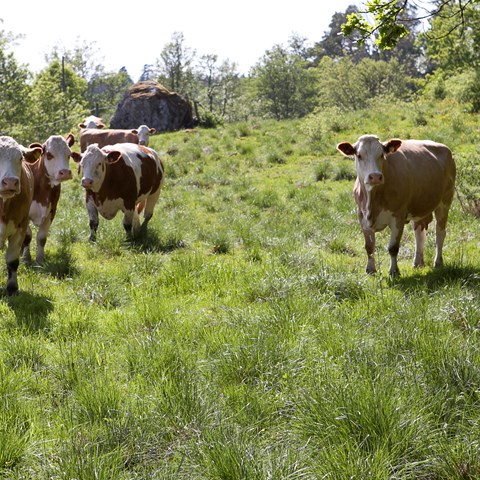Alternative regimes for joint management of large herbivores

In this project, we apply a systems perspective on co-management of large herbivores in Sweden. The project will contribute to solving conflicting interests of hunters and land owners, e.g. through increased knowledge about the role of species interaction, hunting strategies and adaptation measures to meet requirements for reduced deer damage on agricultural and forest crops.
Much of the earlier research on management of economically valuable species has been confined to the analysis of single species. Accordingly, both policy makers and researcher have realized the need for a system based analysis of co-management of multiple species. Moreover, the need to balance different economic interests affected by species management is a crucial issue at both local and national scale. These needs can only be met by integration of economic and ecologic research. In this project, we apply a systems perspective on co-management of large herbivores in Sweden.
The economically optimal joint management of the recently introduced fallow deer (Dama dama) and the sympatric native deer species is analyzed used applied bioeconomic modeling. The results will indicate optimal scale and timing of different management decisions, such as e.g. hunting and the introduction of adaptive measures to reduce deer impact on agricultural and forest crops. The trade-off between different economic interests, such as those of hunters, farmers and forest-owners will be investigated while allowing for a relatively large set of different management options.
The project consists of four major components; a) analysis of the joint population dynamics of moose, roe deer and fallow deer b) analysis of the physical impact of moose, roe deer and fallow deer on agricultural and forest production, and c) quantification of the economic value of the three species to e.g. hunters, farmers and foresters and d) the development of a bioeconomic model where a)-c) are all subject to integrated analysis. The bioeconomic model is applied using data from an ongoing research project at the Kobergs property south of Vänersborg. Although the results will thus be specific for this site, the approach is likely to useful for other locations.
This project will contribute to the international literature in the field, where applied analysis of this type is scarce. It can also contribute to solving conflicting interests of hunters and land owners, e.g. through increased knowledge about the role of species interaction, hunting strategies and adaptation measures to meet requirements for reduced deer damage on agricultural and forest crops.
Kontaktinformation
Katarina Elofsson, forskare
Institutionen för ekonomi, SLU
katarina.elofsson@slu.se, 018-67 17 98